Another Step In A Very Evolutionary Program
Flight Test Report and Analysis by ANN Editor-In-Chief Jim
Campbell
 When last we left ANN's
Intrepid (or.... is that decrepit?) Editor-In Chief Jim Campbell,
he was negotiating a "specially-equipped" Cirrus SR22-GTS G3
through a tricky gravitational vortex near the event horizon of a
black hole when he realized that he had yet to finish the promised
flight test report on the terrestrial version of Cirrus's new G3
upgrade...
When last we left ANN's
Intrepid (or.... is that decrepit?) Editor-In Chief Jim Campbell,
he was negotiating a "specially-equipped" Cirrus SR22-GTS G3
through a tricky gravitational vortex near the event horizon of a
black hole when he realized that he had yet to finish the promised
flight test report on the terrestrial version of Cirrus's new G3
upgrade...
Yeah, that's his story and he's sticking to it (it sure beats
the one about the dog chowing down on his flight test
homework...).
Ah, well... back to Earth.
OK... sorry for the tardiness of Part Two, but we'll be
alternating parts of this flight test and our Cessna Mustang flight
test until we polish off both of those beauties over the next week
or so. The schedule, of late, has been incredibly hectic and we
hope you'll bear with us... and then maybe yours truly can get some
sleep... but with ANN 10.0 breathing down my neck, maybe not.
As we have previously noted, much of what makes a Cirrus G3, a
G3, is far more than skin deep. The Cirrus series has been used to
conduct a lot of moderately hard IFR flight over the years and so
issues like lightning protection take on greater prominence as the
fleet continues to prove its ability as a cross-country workhorse.
We had an extensive opportunity to tour the factory floor and watch
a number of G3's in the making... and the attention to care and
detail in the new wing was considerable. Among the wing's upgrades
are enhanced lightning protection features such as additional mesh
coverage on the wing -- which not only decreases the effects of a
lightning strike, but also allowed for the use of the
lighter/stronger carbon spar.
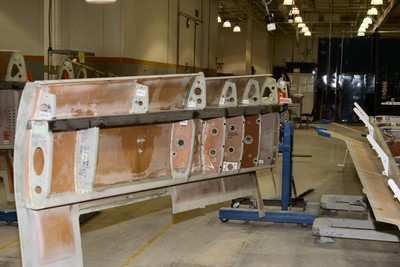
Their greater mesh coverage has allowed them to then use a
lighter-weight mesh system which also decreases the weight penalty
required for the additional lightning protection coverage. They can
now electrically bond the TKS leading edge panel to the mesh
itself, which allows for the prevention of P-Static build up, to
boot. The use of "old-fashioned" E-glass in the wing tips decreases
the effect of lightning strike, while the new design allows for the
slick LED recognition lights that are now a feature on the G3. And,
by the way, a new fuel float does not require the installation of
any wiring within the wing tanks. This eliminates one potential
ignition source from the vicinity of the fuel tank... which of
course, is always a good thing.

Cirrus has changed their lighting scheme a fair amount. The far
leading edge of the wing, embedded within the tip, now houses a new
9 watt LED recognition lighting source that offers excellent
enhancements to ground/tax visibility and, in conjunction with the
landing light, a distinctive and decidedly bright appearance in
flight.
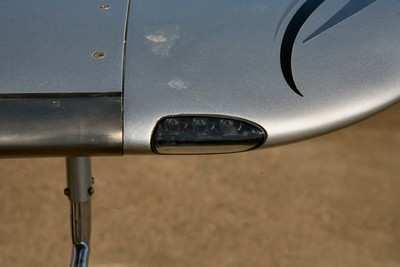
The Cirrus SR20 and SR22 series have been flown hard by a number
of pilots, and occasionally flown too hard by the unlucky or unwary
few. As a result, Cirrus is now installing an Aircraft Data Logger
(ADL) as standard equipment on all new aircraft. It's put
there only for accident investigation purposes, and the data
remains the property of Cirrus Design. Its presence logs a number
of electronic, and system issues including the status of the
CAPS ballistic parachute system, the status of the TKS system,
positions of control surfaces, engine data, the autopilot, and a
number of aero-dynamic functions. Cirrus documentation emphasizes
that the aircraft data logger, or ADL for short, is meant only to
be a tool for accident investigation and eventual accident
prevention. This signals an uncommon commitment to safety and
accident prevention on the part of this company. The ADL is
installed back in the tail of the aircraft similar devices on
transport category aircraft.
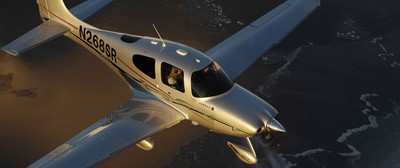
One of the standard features of the G3 upgrade (or will be
shortly), is the standard use of WAAS throughout the Avidyne/Garmin
avionics suite. While WAAS has recently become available for
Garmin's phenomenally successful GNS-430 and GNS-530 wunder-boxes,
and Garmin is retrofitting as many as 100 units per day, the Cirrus
G3 series is yet not quite ready for the exceptional charms of
WAAS. But... almost. The upcoming Release Seven of Avidyne's
Entegra software package will soon allow the current PFD and MFD to
take full advantage of the Wide Area Augmentation System that has
been so long awaited and so breathlessly anticipated. With WAAS,
GPS precision flight approach accuracy now comes down to less than
3 meters; and offers simplicity, redundancy and unheard of
flexibility for instrument flight in reference to thousands of
airports that were heretofore bereft of precision approach
capability.

I recently spent an interesting afternoon at Garmin, in the
company Baron B-58 (loaded with every Garmin goodie known to God...
and possibly a few he doesn't have yet), to get a feeling for
Garmin's implementation of WAAS technology. For those of you who
have not had a chance to see WAAS at its finest, I can assure you
that you are in for a really good time. We shot two series of
WAAS-aided approaches on a somewhat scuzzy day and noted that
Garmin's WAAS implementation is virtually seamless -- and for those
of you already well familiar with your GNS-430/530 goodie boxes,
it's only going to take you a few minutes to transition to a whole
new world. Garmin has made this about as easy as it gets, and once
you load a GPS/WAAS-aided 'approach with vertical guidance' into
your system, you're going to wonder how you ever lived without
it.
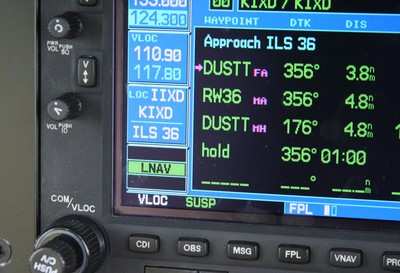
An LPV approach to minimums, when compared to its equivalent
partner on the same runway and shooting the now nearly-stone-age
ILS, showed that the WAAS-enabled approach was not only a smoother
way to fly, but that the elder ILS approach had a number of issues
fairly close to decision height due to the iron charms of a set of
nearby railroad tracks. The LPV approach was affected by none of
that nonsense and produced an autopilot-coupled approach that
couldn't have been any smoother if had been strapped to a
rail. Take my word for it folks, life in the land of WAAS is going
to be very, very cool.
Now... when you couple this kind of 'precision' approach
capability to a full-blown Avidyne PFD/MFD combo, you're going to
be able to get around in ways that would have shocked us just a few
short years ago. Cirrus owners (and everyone else, for that
matter), rejoice! WAAS is
coming.

Not all of the cockpit updates are so radically high-tech.
However, they are ALL quite welcome, especially in terms of
passenger and pilot comfort. Cirrus has designed a new
environmental control system that not only doubles the requisite
heater/hot-air output (and since Cirrus design is based in
Duluth, we have a feeling that this particular update was more a
matter of self-defense than anything else...), but also posts a 40%
increase in cool-air flow and the requisite ventilation when
dealing with sunnier/warmer climates. Cirrus accomplished this bit
of 'airier' engineering by relocating the ECS fresh air vent from
the inboard leading edge of the wing, to the right side of the
cowling, with the use of a good-sized NACA duct/vent. A redesigned
heater box is responsible for the additional hot air, while
additional plumbing and other subtle changes make the ECS system a
far simpler and more capable aid to personal comfort.
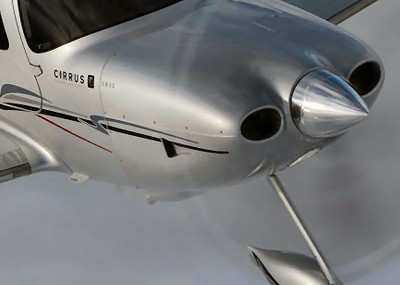
One of the apparent benefits of the extensive wing redesign that
we talked about (in Part One) of this article, were the changes
that resulted to the aircraft's overall airframe weight, and the
airframe's resultant weight distribution. Sometime in the third
quarter of this year, Cirrus will be able to offer a full
air-conditioning package, heretofore only available in
non-turbocharged aircraft, for all models of the Cirrus SR22. This
has been one of the most requested upgrades that we've seen on the
Cirrus Owner's and Pilots Association (COPA) message boards, and we know of
a number of pilots who are already placing orders for delivery
later this year, for that very reason. We have precious little data
about how the air conditioning system will work, if indeed anything
has changed from the current methodology, but for those of us down
south, who have had to taxi out on days so steamy that the sweat
dripping off your forehead stings your eyes, this is going to be a
welcome accessory indeed.

Even more subtle are the changes to the G3's switching panel,
which has recessed each switch a little bit, added backlighting,
and is dimmable along with the instrument lighting. Redesigned
panel trim replaces the older cockpit bezel, and a little bit of
styling has slicked up an already rakish panel. The circuit breaker
panel has been redesigned to eliminate potential confusion, and the
entire effect is one where a prudent observer has to admit that
extensive thought and consideration is gone into every aspect (even
the seemingly mundane) of cockpit and cabin comfort and clarity.
Yeah, we were impressed. And we're getting used to having that
feeling every time we go to Duluth.
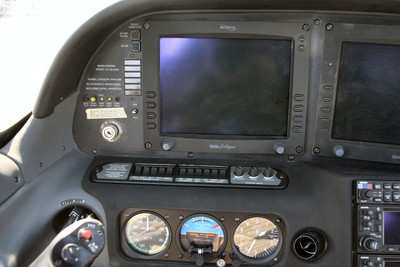
Finally, the Cirrus G3 signals the launch of a whole new
aestheticly attractive range of exterior decor. Cirrus has
officially released not only a truly beautiful new 'Goldmist'
exterior color, but has also decided to offer two-tone combinations
of either the previously announced Sterling Silver over White, or
the new Goldmist over White, as well. Each of these upgraded color
packages is coupled with extensive refinements in interior seating
and decor. While I was not that big a fan of the Sterling Silver
(looked WAY too metallic for my tastes...) I have to say that the
Goldmist exterior is breathtaking... as is the preferred interior
scheme that goes with it. I can't wait to see what they come up
with next...
Next... Enough of the travelogue... let's start
this puppy up and fly the beast!
 ANN's Daily Aero-Linx (04.16.24)
ANN's Daily Aero-Linx (04.16.24) Aero-News: Quote of the Day (04.16.24)
Aero-News: Quote of the Day (04.16.24) Airborne 04.10.24: SnF24!, A50 Heritage Reveal, HeliCycle!, Montaer MC-01
Airborne 04.10.24: SnF24!, A50 Heritage Reveal, HeliCycle!, Montaer MC-01 Airborne 04.12.24: SnF24!, G100UL Is Here, Holy Micro, Plane Tags
Airborne 04.12.24: SnF24!, G100UL Is Here, Holy Micro, Plane Tags Airborne-Flight Training 04.17.24: Feds Need Controllers, Spirit Delay, Redbird
Airborne-Flight Training 04.17.24: Feds Need Controllers, Spirit Delay, Redbird













